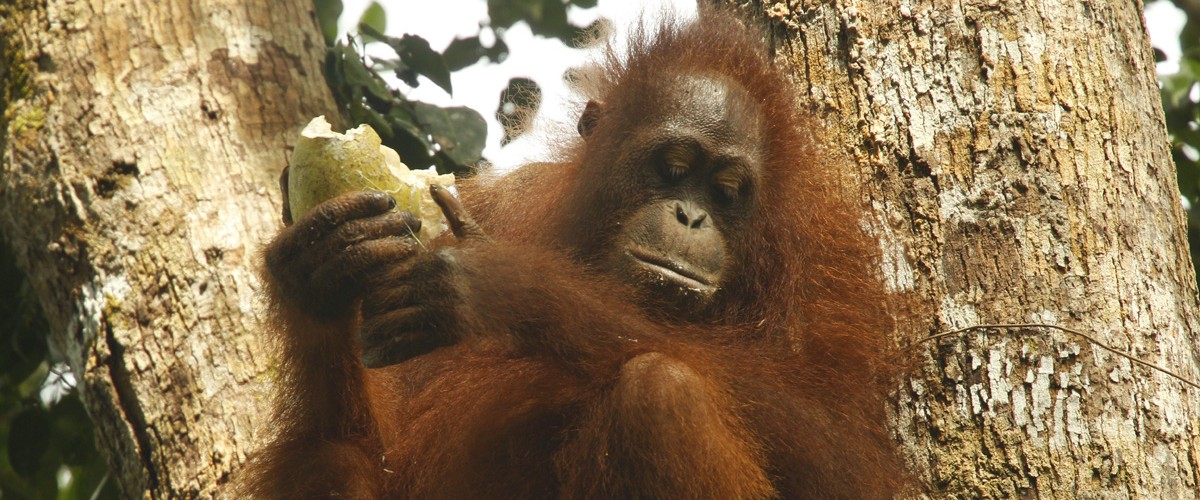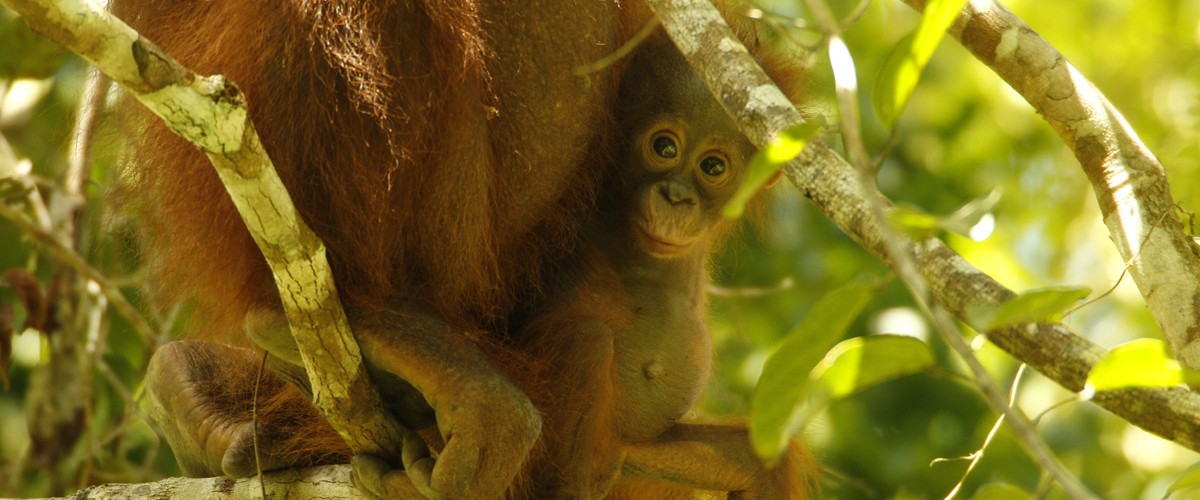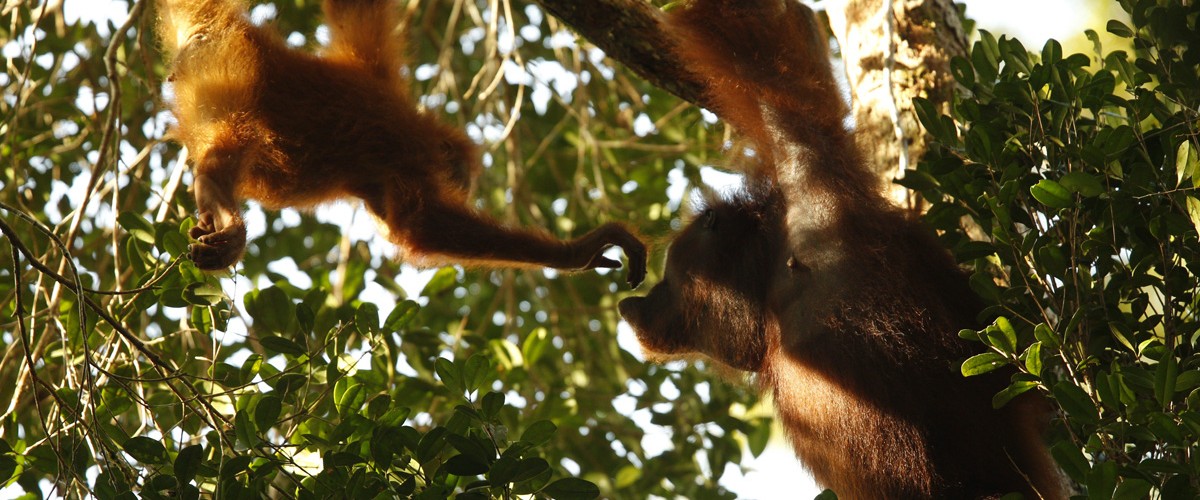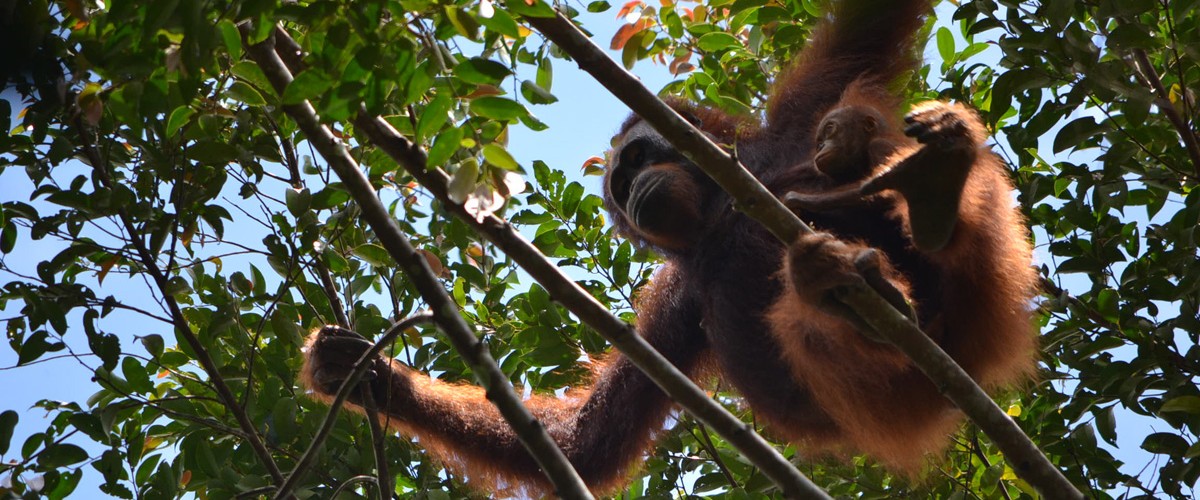By Seno Wicaksono, Student Researcher
My name is Seno Wicaksono. I am a student researcher from Universitas Nasional (UNAS) in Jakarta, Indonesia. Thanks to support from the Gunung Palung Orangutan Conservation Program/Yayasan Palung, I am conducting research for my senior thesis in Gunung Palung National Park. More precisely, I am conducting research in two areas in the Park, namely at the Cabang Panti Research Station and the Rangkong River research area. I have been very proud and lucky to see orangutans in their natural habitat on the island of Borneo.
Gunung Palung National Park is an area with high biodiversity. The area surrounding Cabang Panti Research Station is an area that has many types of habitats. There are eight habitats which include peat swamp, freshwater swamp, alluvial bench, sandstone, lowland granite, upland granite, montane and heath forest. Meanwhile, the Rangkong River area is made up of peat swamp, heath, and alluvial forest. This area was formerly illegally logged.

The topic of my research is about the characteristics of these orangutan habitats and patterns of new orangutan nests that are constructed. My aim is to assess the habitats’ tree profiles using a software called SexI-FS (Spatially Explicit Individual-based Forest Simulator). Data collection is carried out in the field and then data is entered into this program. I collect information such as tree height, tree diameter (>20 cm), tree canopy (height and width of the canopy), and location coordinates. After the tree data collection is carried out, I begin the process of sampling leaves, fruit and flowers. This helps with species identification. I do this in forest plots that are 20 x 1000 meters, with the aim of seeing the total density of trees within the area. This field work is carried out by two people, myself and a GPOCP/YP research assistant who can help me with the field sampling process. The field research assistants at Cabang Panti have had so much experience and have really helped me in the process of identifying tree species. The extraordinary knowledge that the assistants have has made it easy for new researchers like me to learn about plant characteristics and morphology. I’ve learned about plants’ family, genus, and species.

The second part of my research is to collect data on new orangutan nests in the Rangkong research area. I am taking data on orangutan nests along 8 transects, representing several habitat types (peat swamp, alluvial and heath). Each transect is 1 km. While surveying, we look for new nests and my assistant friends also check old nests, where they’ve collected data in previous months. We usually collect this data at the end of each month, over the course of about 5 days, depending on weather. When looking for new nests, I take data on nests with categories of class A and B. These categories, which researchers use as a standardized way to characterize nests across various studies, are usually not that much different. For class A, nests are made up of leaves that are all still green, meany it is very new. Class B has several leaves that have undergone changes, like turning brown, indicating that they have been in place for a bit longer.

Besides my own research, I have also worked to help with other research at Cabang Panti. I am very happy to be able to contribute to the various activities here because it adds to the knowledge that I have. I often help to process orangutan fecal samples in the lab. Before my time here, I never knew how much you could research just from orangutan feces! Specifically, I was surprised to learn that orangutan feces contains many seeds and orangutans can be considered seed dispersers. This is because orangutans eat lots of fruits. However, not all of the seeds remain intact. Some people even refer to orangutans as “forest farmers,” helping to disperse seeds and make new trees grow. I have also learned about the processing of orangutan urine samples. Orangutan urine can help us understand the condition of the orangutan, such as knowing whether it is healthy. We can also learn if female orangutans are pregnant.
In August, I also helped with education outreach in schools, along with my friend Tasya. Tasya is also a student researcher from UNAS. We presented at two schools, namely SMA PL Santo Yohanes and MAN 01 Ketapang. We presented on materials about orangutans and why they are important to research and conserve.
My time in Kalimantan so far has provided me with so much knowledge and new experiences. I am grateful for this opportunity!

Management of Cabang Panti Research Station is conducted by the Gunung Palung National Park Office (BTN-GP) in collaboration with GPOCP/YP. Scientific research is carried out in conjunction with the Universitas Nasional (UNAS) and Boston University.









